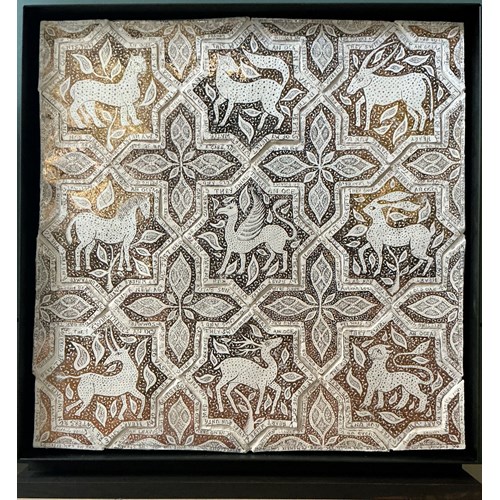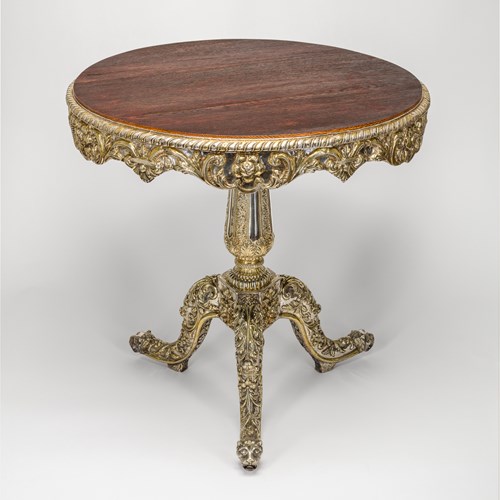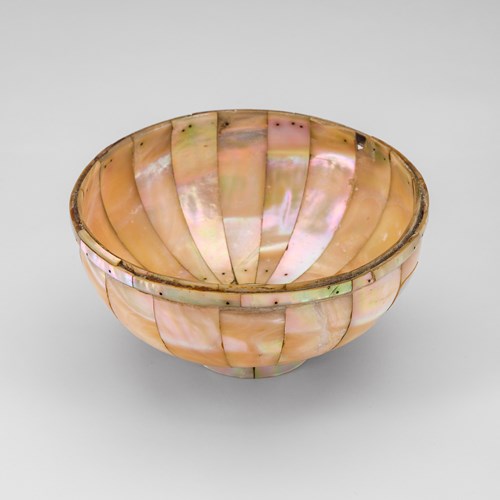Marketplace
Company School Painting of Two Ducks (with Persian inscription)
Company School Painting of Two Ducks (with Persian inscription)
Period 19th century
Origin India
Medium Watercolour on paper
Dimension 29 x 18 cm (11³/₈ x 7¹/₈ inches)
Exceptionally finely painted, these studies provide a wonderful celebration of the natural world’s capacity for exquisite pattern and delicate colouration.
The Eurasian Widgeon appears with a chestnut head, creamy crown and deep hazel eyes. Buff feathers delineated with soft tawny bands run from chest to flank. The back and marginal coverts are exquisitely decorated with wavy black lines, while the rest of the wings comprise of brown, black and white hues.
These large dabbling ducks may be found across Eurasia, favouring northern climes for breeding and the warmth of Southeast Asia and central Africa during the winter months. Occupying wetland habitats, such as marshes, they dabble for aquatic plants or graze vegetation on land.
A study of an unknown duck.
This charming and intriguing study presents a black-headed duck, with dashes of ‘forget me not’ blue from the top of the beak to the crown. The deep hazel eyes stand out against an outline of white feathers. A thicker band of white forms a semi-circle around the eyes, creating a distinctive and extremely elegant pattern. This is further accentuated by a vivid wash of electrifying teal on the bird’s cheeks. Grey feathers along the nape of the neck appear to cascade down into creamy and deep brown lobes, which run along the underside of the bird. The wings are aubern with the speculum demarcated by a further wash of exquisite teal. Rendered with such fine brushstrokes, the soft texture of the feathers is almost palpable.
As this species is unknown, it may signify that the bird has become extinct since the painting was undertaken. Sadly habitat decline and hunting have eradicated certain breeds of Indian ducks, a recent notable example bring the pink-headed duck, (Rhodonessa caryophyllacea), which has not been sighted since the 1950s.
The Persian inscription beside the wigeon reads “چیرن (chīran)” or “چیری (chīrī)” and is numbered “94”. The bird below is numbered “95”. At the top of the folio appears the page number “132”.
References
Bikram Grewal et al. 2016. Birds of India - A Pictorial Field Guide. Om Books International.
Stock No.: A5373
The Eurasian Widgeon appears with a chestnut head, creamy crown and deep hazel eyes. Buff feathers delineated with soft tawny bands run from chest to flank. The back and marginal coverts are exquisitely decorated with wavy black lines, while the rest of the wings comprise of brown, black and white hues.
These large dabbling ducks may be found across Eurasia, favouring northern climes for breeding and the warmth of Southeast Asia and central Africa during the winter months. Occupying wetland habitats, such as marshes, they dabble for aquatic plants or graze vegetation on land.
A study of an unknown duck.
This charming and intriguing study presents a black-headed duck, with dashes of ‘forget me not’ blue from the top of the beak to the crown. The deep hazel eyes stand out against an outline of white feathers. A thicker band of white forms a semi-circle around the eyes, creating a distinctive and extremely elegant pattern. This is further accentuated by a vivid wash of electrifying teal on the bird’s cheeks. Grey feathers along the nape of the neck appear to cascade down into creamy and deep brown lobes, which run along the underside of the bird. The wings are aubern with the speculum demarcated by a further wash of exquisite teal. Rendered with such fine brushstrokes, the soft texture of the feathers is almost palpable.
As this species is unknown, it may signify that the bird has become extinct since the painting was undertaken. Sadly habitat decline and hunting have eradicated certain breeds of Indian ducks, a recent notable example bring the pink-headed duck, (Rhodonessa caryophyllacea), which has not been sighted since the 1950s.
The Persian inscription beside the wigeon reads “چیرن (chīran)” or “چیری (chīrī)” and is numbered “94”. The bird below is numbered “95”. At the top of the folio appears the page number “132”.
References
Bikram Grewal et al. 2016. Birds of India - A Pictorial Field Guide. Om Books International.
Stock No.: A5373
Period: 19th century
Origin: India
Medium: Watercolour on paper
Dimension: 29 x 18 cm (11³/₈ x 7¹/₈ inches)
Provenance: UK private collection for the past 30 years
More artworks from the Gallery


_T638839371969721990.jpg?width=2000&height=2000&mode=max&scale=both&qlt=90)




, A FORLORN HEROINE_T638411865822887245.jpg?width=500&height=500&mode=pad&scale=both&qlt=90&format=jpg)

